Since I am the sort of person who damn near weeps when she sees a great Degas pastel (like Waiting, 1882, above), it’s not surprising that drawings are perhaps the medium closest to my heart. I love the spontaneity, the economy of means, and the sense that one is as close as possible to the artist’s interior life and thought processes.
When I published a report a year ago on the continued vitality and expanding definitions of the art of drawing, I knew I was probably overlooking a lot of good artists, members of the site I see posting work on Instagram and Facebook. So here’s an update, a look at the many who turn to drawing and why they do so. (The absence of figurative work means I didn’t chase after certain members hard enough, and so there will inevitably be a part three.)
Mariella Bisson: “I began to draw as soon as I could hold an object in my hands. I was a drawing major at Pratt Institute, where I was trained in formal academic skills. Collage helped me become rowdier and freer with my edges, but my paintings all begin as drawings. In Split Birch and Bluestone, I strove for a stark geometry and used collage in the initial drawing to cluster my shapes, refine my arcs, and plan the future painting.
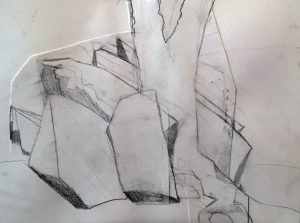
Mariella Bisson, Split Birch, Bluestone, Drawing in Search of Composition (2017)
Graphite, collage on paper, 12 by 16 inches
“I draw every day. My middle finger has a permanent groove— an indentation made from pencils. Drawing is like a wrestling match with the artist in one corner of the ring—and Form, Intention and Materials in the other three corners. The artist gets to wrestle all three at once.”
William Norton: “My work is only about drawing. With my Dremel, I carve and etch lines into Plexiglass. Oftentimes, when I display the Plexiglas projected off the wall or mounting surface, the shadows of the drawing can then be cast onto the wall. Or I will put the drawing in front of a mirrored surface so that it doubles the drawing. I also have employed colored and formed Plexiglass to enhance the drawing in three dimensions. Drawing is important to me because there is no artifice involved: each line comes directly from the artist. In paintings I can cover up any mistakes I make. In drawing every mistake has to be incorporated, especially because of the way I work, and there is no erasure. Every line etched into the Plexiglas is permanent, and I have to live with it.
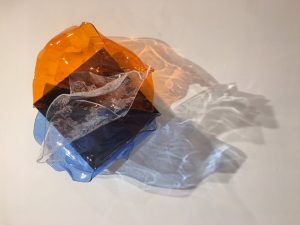
William Norton, Headlong Flight (2017), hand-etched and formed Plexiglass with shadows mounted on wood, 20 by 20 by 16 inches.
Peri Schwartz: “Drawing has always been an integral part of my process, and when I started using Mylar in 2012, I found a surface that resonated perfectly with my subject. The ability to erase and get back a beautiful light is still magic to me. For almost 20 years I have used my studio as a subject in paintings, drawings and prints. I am constantly rearranging the tables, color on walls, boards and books to get the composition to work. I initially begin a drawing to figure out how big the painting or print should be. As the drawing develops, it takes on a life of its own.
Linda Vi Vona: “I first began to focus on drawing at the age of 15 while attending a Saturday class at a private art school in Queens, NY. My classmate Cindy and I were the only females taking the course, and when the subject turned from still life to the female nude, we were relegated to a separate room to draw from a plaster cast. Two years later, Robert Gwathmey, my instructor at Cooper Union, showed all his students how to whittle a stick, dip it in black ink, and proceed to use it to draw everything, including live models. A quick, linear way of seeing, the exact opposite of the charcoal chiaroscuro I had patiently labored at years previously.
“Another two years later, I worked on a series of quick pencil sketches of olive pickers in the town of Fiesole, Italy. The results were more like marks of motion first, form second, and composition third.
“Sixty-plus years after those first encounters, drawing is still the best visual exercise for the mind and hand. A oneness with the all.”
Millicent Young: “I draw what I do not know yet, what I have not yet seen. Drawing cycles emerge when semi-conscious material has built up in my imagination to an internally felt tipping point. Drawing is a process through which I engage with the forms, ideas, layers, and content that are occupying my mind. A cycle of drawing as often precedes a cycle of three-dimensional work as it follows one. As a sculptor, the space of a piece of paper is free of gravity and the rigors of three-dimensional construction. It is a plane that captures movement into stillness and idea into form. My drawings can be as much intimations of forms yet to arrive as contemplations upon work completed.
Frances B. Ashforth: Drawing has always been and continues to be the basis for all my art. It’s a true form of research and study for me and allows me to observe and then break down my observations into studies of pure line and light. Drawing allows me to create and solve problems in a way I simply cannot do within my painting or printmaking practice. There is always a feeling of freedom and simplicity to drawing, no matter how complex the image. It’s hard to describe, but I find this to be the most meditative part of my studio practice. My drawings are generally based on observations of land, water and stone.
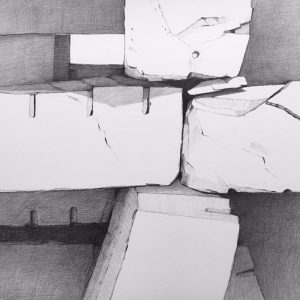
Frances B. Ashforth, From the “Cribstone Bridge” series (2017), Kohinoor pencil on Bristol board, 22 by 22 inches
Tracey Brockett: “I draw daily, lately with pen and ink. It is a practice separate from but complementary to my painting, having to do more with structure and shape than color. I consider them works in their own right, not sketches. The force and direction of line is really what drives the drawing; in my paintings, it is color that is the driver. There have been times when the distinction is pretty subtle, but it has always been a clear one to me. Drawings are a way of working on different issues.
Rita Grendze: “These types of drawings were instrumental to the planning process for my large installation in Riga, Latvia. The immediacy of pencil on paper and the scale of the pieces helped me maintain focus and continue my research. The process helped me to discover and to rediscover pattern, to let go of the preciousness of so much hand work (making/drawing, then cutting/erasing). I’ve continued this type of small work since completing the installation in Latvia and found it to also be an excellent tool for transitioning to the next project.”
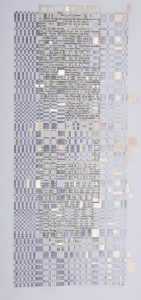
Rita Grendze, Study for an installation called “100 Signs for Those Seeking Light” in Riga, Latvia (2016), graphite with cut paper and Dura-Lar on Arches paper, 9 by 20 inches
Marieken Cochius: “I draw to distill what I sense and what I have seen, however fleetingly. What I draw (and sculpt) is always organic. Maybe something as seen through a microscope or telescope, but I do not work from images. I put my headphones on and listen to music in languages I do not speak, and this keeps part of my brain occupied so I can use the rest better to work with. I think a lot of my drawings have a sculptural quality; for me drawing is also a seeing and sensing of space itself.
“There are two kinds of lines that keep recurring in my work: one is the antennae, vibrating and maybe part electric current. The other line is a builder, the ‘harnesser of space,’ structural.’”
Matthew Dibble: I’ve been doing these small pen-and-ink drawings since I was very young. It’s been said that even the angels ache for a body sometimes. If I did figurative work what would it look like? I asked myself this question recently and soon realized that figures were part of my work for many years, an ongoing series of drawings. Projecting them on to larger canvases, I was able to find many new compositions and entanglements. I’m often asked where the figures originate. There is an ache in my body: on the outside everything is calm, the inside is much different.”
Top: Edgar Degas, Waiting (1882), pastel on paper, 19 by 24 inches
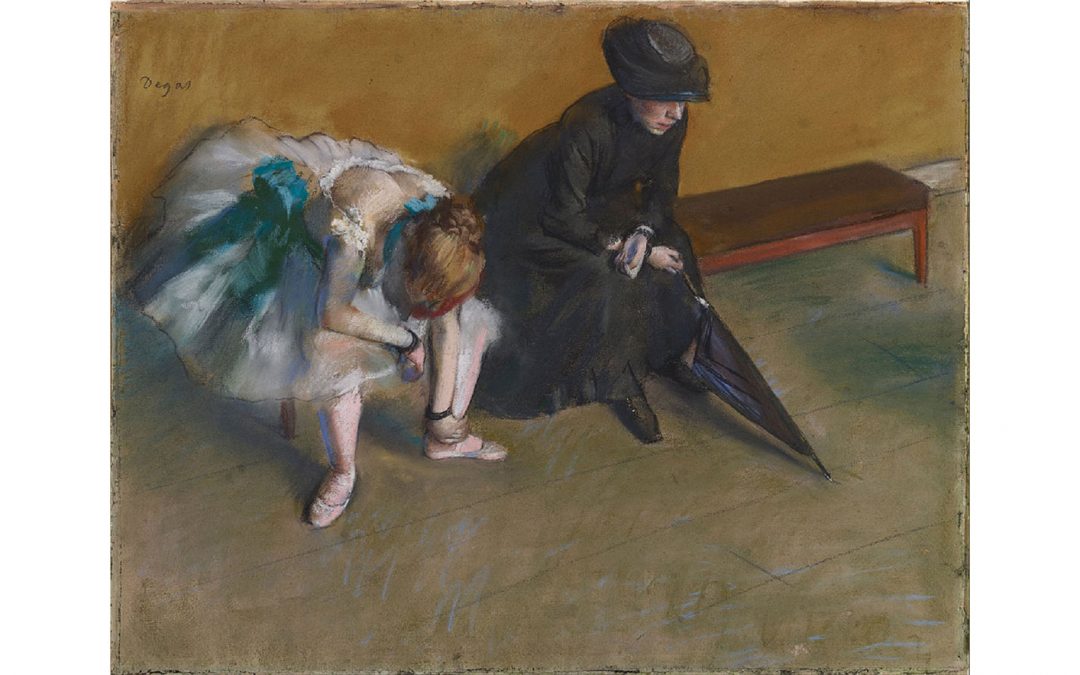
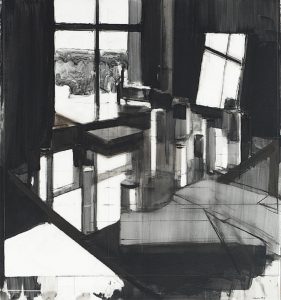
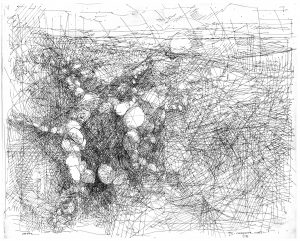
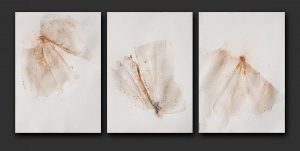
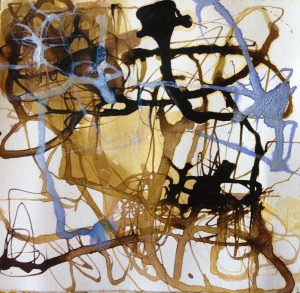
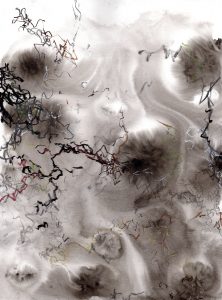
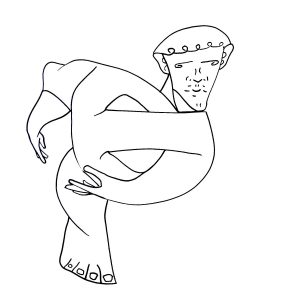
Quite a variety of visual manifestations of drawings in both intent and outcome. I enjoyed this take and would like to see more.
Thank you Ann, for this informative read about the importance of drawing for these artists. I particularly enjoy seeing their drawings and then visiting the artists’ websites to see their other work.
Thank you so much Ann. It is really fascinating to see how other artists think about their work.
I enjoyed this so much. It is said, drawing is the first thought of the artist!